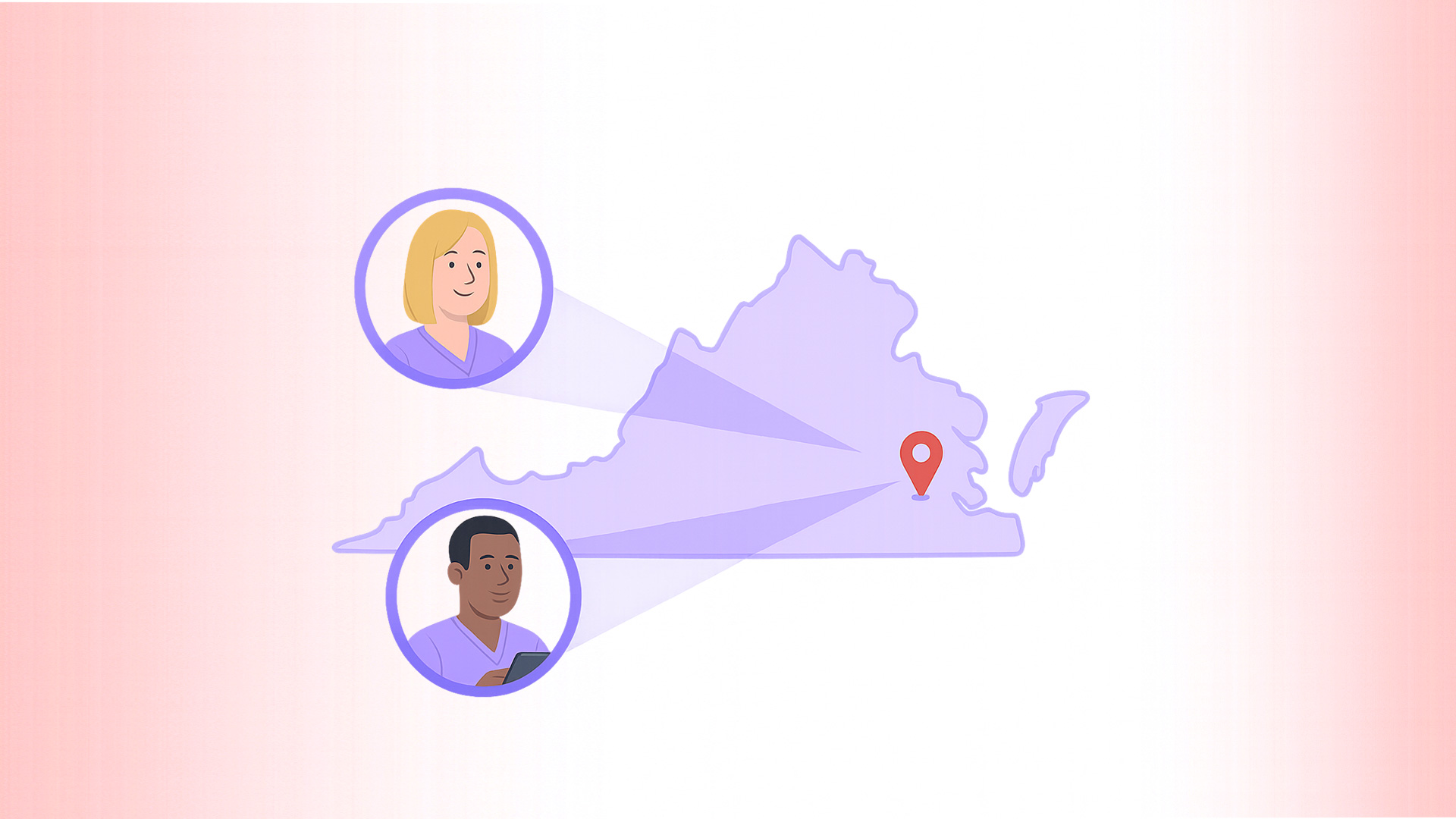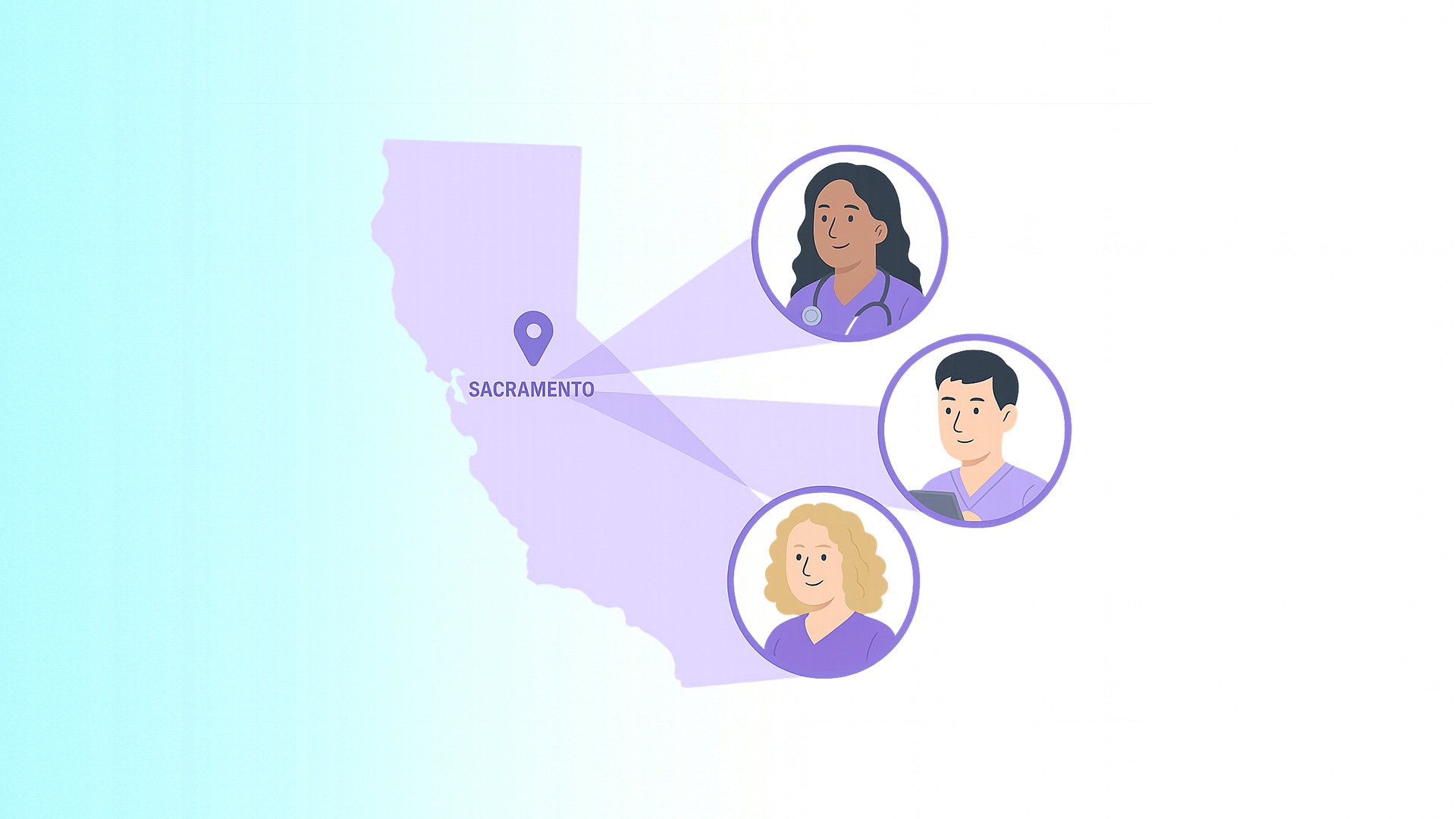In the University of Cincinnati nurse practitioner programs, clinical rotations are supervised, hands-on experiences where students apply advanced nursing knowledge in real patient care settings under a qualified preceptor and students are responsible for finding their own placements. Each rotation is tied to your specialty track, with required clinical hours that must be completed and approved before graduation and licensure. These placements develop essential skills in assessment, diagnosis, patient management, and evidence-based practice.
TL;DR – University of Cincinnati Nurse Practitioner Programs Clinical Rotations
- Students secure their own preceptor and site: The University of Cincinnati nurse practitioner programs follow a student-led placement model. You’re responsible for finding a qualified preceptor and site that match your specialty and meet all program and state board requirements.
- Start your search months in advance: UC warns that securing a site can take up to six months. Specialty areas like psychiatric mental health, pediatrics, and acute care are in high demand, so the earlier you begin, the better your chances.
- Deadlines are strict and recurring: You must submit a Preceptor Application Packet every semester you have a practicum course. Miss the cutoff and your rotation could be postponed to the next term.
- The Graduate Clinical Site Coordination Team supports you — but doesn’t place you: They can suggest alternate sites, review your paperwork, and guide you through onboarding requirements, but the outreach to secure a preceptor is your responsibility.
- NPHub can take the search off your plate: Their network of vetted, compliance-ready preceptors already meets UC’s program standards, helping you avoid last-minute cancellations, paperwork delays, and missed semester starts.
Why Clinical Rotations Are Getting Harder to Secure for NP Students
For many students enrolled in University of Cincinnati nurse practitioner programs, the coursework is challenging, but finding a clinical placement can feel like a full-time job. The College of Nursing requires students to secure their own sites and preceptors, meaning you’ll need to actively engage with clinics, hospitals, and other healthcare facilities to find a match that meets your practicum experiences requirements.
This isn’t just about checking a box for your program. Clinical rotations are where nurse practitioners translate classroom education into real-world nursing practice, working directly with patients under the supervision of a physician or advanced practice clinician. The right preceptor doesn’t just sign off on hours, they assist you in building skills, managing complex health cases, and safely prescribing medications and performing procedures.
But here’s the reality for University of Cincinnati Nurse Practitioners:
- Competition is steep. You’re competing with other students from UC, as well as from other Ohio schools and even online programs based in other states like Indianapolis, all vying for the same preceptors.
- Certain specialties are especially challenging. For example, securing a Psychiatric Mental Health site or Pediatric Primary Care rotation can be difficult because of high interest and limited availability in community settings.
- Healthcare sites are stretched thin. Many clinics have limited staff and can only take a small number of students per semester, meaning your application might be declined even if you meet all eligible requirements.
- Delays can push back graduation. Without a UC-approved clinical placement processed by the deadline, you risk having your course start pushed to a future semester, which can impact your Doctor of Nursing Practice or MSN program timeline.
Adding to the challenge, every clinical site and preceptor must be approved by the state board and the University of Cincinnati College of Nursing before you can start. This review process ensures the site can prepare you for advanced nursing practice, but it also adds time especially if paperwork, affiliation agreements, or information from the site is delayed.
The takeaway? The longer you wait to begin your search, the fewer resources and opportunities you’ll have. And if your first choice falls through at the last minute, it can take weeks to contact and secure another option.
That’s why many nurse practitioner students turn to NPHub. With a free account, you can skip cold-calling and connect directly with vetted preceptors who have already completed compliance checks.
You’ll know upfront if they meet your specialty’s needs, have space this semester, and can help you complete your hours on time. Instead of wondering where to work, you’ll be ready to step into a site that’s already approved, making your commitment to becoming a graduate-level nurse practitioner a lot smoother.
What to Expect from University of Cincinnati Clinical Rotations
For students enrolled at University of Cincinnati nurse practitioner programs, clinical rotations are where nursing education shifts from textbooks and discussion boards to real-world nursing practice with patients across all ages.
Whether you’re in the Doctor of Nursing Practice, Master of Science in Nursing, or a Post-Master’s Certificate track, these practicum experiences are the bridge between your coursework and the day you graduate as a fully prepared nurse practitioner.
At UC, the clinical placement process is a collaborative effort involving the student, preceptors, clinical site coordinators, and the Graduate Clinical Site Coordination Team within the College of Nursing’s Office of Academic Affairs. This team plays a critical role in helping students actively engage in the search process and navigate obstacles:
- Supports and collaborates with students who encounter barriers in securing a preceptor.
- Identifies other possible site/preceptor options when your first choice doesn’t work out.
- Coordinates supplemental and contractual paperwork between the university, clinical sites, and preceptors.
- Liaises with clinical partners to ensure onboarding requirements—like background checks, EMR training, and site-specific procedures—are met so you can start on time.
UC offers a range of resources to help nurse practitioners in training prepare for their rotations, including:
- Clinical Planning Checklist (PDF) — a step-by-step guide to tasks you need to complete before your semester begins.
- Networking Tips & Strategies (PDF) — advice for making professional contact with potential clinicians and physicians.
- Preceptor Outreach Scripts — email and phone templates to help you introduce yourself and outline your clinical expertise needs.
- Preceptor Tracker (Excel) — a spreadsheet to log every preceptor you’ve contacted and track their responses.
Deadlines Matter
Every semester, you must submit a Preceptor Application Packet, complete with your portion filled out, by the published deadline:
- Fall Semester: Last Friday in May
- Spring Semester: First Friday in October
- Summer Semester: First Friday in February
Missing these deadlines, or submitting incomplete application materials, can delay your placement and potentially push back your course start date, impacting your ability to complete the program on schedule. Remember: you must repeat this process for every term that includes a practicum course.
Special Site Considerations
Some clinical partners like Cleveland Clinic (Ohio), Nationwide Children’s Hospital (Ohio), Norton Healthcare (Kentucky), and Stanford Health Care (California) have their own application and approval processes.
Before you reach out to these sites, UC recommends working with your clinical site coordinator to understand their requirements. Certain sites also assess administrative fees, which are paid directly to the site and not the preceptor.
State Authorization and Board Requirements
The University of Cincinnati is approved to place nurse practitioner students in most U.S. states under NC-SARA, but there are restrictions. Students cannot complete clinical activity in Arizona, Louisiana, Massachusetts, New York, Oregon, Rhode Island, or Tennessee, and some states require additional state board paperwork, especially California and North Dakota. These forms must be submitted at least one week before the semester begins.
Taking Ownership of Your Search
While UC provides resources and staff support, securing a clinical placement is ultimately your responsibility. Depending on the healthcare organization, the process can take up to six months, so you’re encouraged to start your search early, network widely in your community, and actively engage with your program contacts.
In short, UC sets you up with information, tools, and guidance—but the commitment to finding a preceptor and meeting your nursing practice requirements is yours. With deadlines to meet, forms to process, and skills to develop, proactive planning is the key to ensuring your practicum experiences run smoothly and keep you on track to graduate on time.
If you’re running into roadblocks or simply want a faster, more reliable way to line up a University of Cincinnati approved preceptor, NPHub can help.
With a free account, you can browse a vetted network of preceptors who already meet UC’s program and state board requirements. You’ll see availability, location, and specialties before you reach out so you can skip the endless cold calls and get your semester started without delays. Create your free NPHub account today and make your clinical search stress-free.
University of Cincinnati Nurse Practitioner Programs That Require Clinical Rotations
No matter which track you choose within the University of Cincinnati nurse practitioner programs, you’ll be required to complete in-person practicum experiences under the supervision of a qualified preceptor. These clinical hours are a cornerstone of your nursing education, allowing you to apply classroom learning, refine clinical expertise, and prepare for advanced nursing practice in real healthcare environments.
The College of Nursing offers multiple NP specialties, each designed to meet unique community health needs and prepare students for national certification:
- Family Nurse Practitioner (FNP): Provides comprehensive, lifespan-focused care for patients of all ages, from adolescents to older adults, across a variety of primary care settings.
- Adult-Gerontology Primary Care Nurse Practitioner (AGPCNP): Focuses on health promotion, disease prevention, and chronic condition management for adults and seniors.
- Adult-Gerontology Acute Care Nurse Practitioner (AGACNP): Delivers complex and acute care to hospitalized or critically ill patients, working closely with physicians and other clinicians.
- Women’s Health Nurse Practitioner (WHNP): Specializes in reproductive, obstetric, and gynecologic health across the lifespan.
Degree Pathways
These specialty tracks are available through multiple degree pathways within the University of Cincinnati College of Nursing:
- Master of Science in Nursing (MSN): For RNs ready to advance into nurse practitioner roles.
- BSN to DNP: Designed for nurses seeking a Doctor of Nursing Practice degree with direct entry from a BSN.
- Post-Master’s Certificate: For MSN-prepared nurses seeking to add a new NP specialty.
Graduates from all pathways are eligible to sit for their respective national board certification exams and apply for state licensure as an Advanced Practice Registered Nurse (APRN).
Each specialty includes required clinical hours spread across multiple semesters, often starting with foundational course-based rotations and progressing to advanced practicum experiences that build on your growing skills.
To complete your program on time, you must secure a clinical placement that meets both UC’s standards and your specialty’s unique patient population requirements.
University of Cincinnati Clinical Placements: How to Secure Your Preceptor
For nurse practitioner students in any program, securing a clinical placement is one of the most important steps on the path to graduation.
Whether you’re working toward your Master of Science in Nursing, Doctor of Nursing Practice, or a Post-Master’s Certificate, your practicum experiences are where you put theory into practice caring for patients, refining your skills, and building clinical expertise under the guidance of a qualified preceptor.
Because most schools use a student-led placement model, you’ll need to be proactive in finding, confirming, and preparing for your site. Here’s a clear, proven process to help you navigate it from start to finish.
Step 1: Know Exactly What You Need
Before you start emailing clinics or calling hospitals, be clear on your program’s requirements:
- Specialty focus — Family NP students need all-age exposure; psychiatric tracks need mental health settings; acute care tracks require hospital-based experiences.
- Skills and procedures — Identify what you must practice: assessments, chronic disease management, prescribing medications, or performing advanced procedures.
- Timeline — Match your preceptor’s availability to your start and end dates.
- Site onboarding — Many facilities require EMR training, background checks, or orientation before you can start.
Step 2: Target the Right Sites
The fastest way to stall your search is to send the same generic email to every healthcare facility you can find. Instead:
- Choose sites that match your specialty’s patient population and learning needs.
- Look beyond hospitals — community health clinics, specialty practices, group offices, and school-based clinics may be open to students.
- Factor in state board and authorization rules if you’re completing hours outside your home state.
Step 3: Make Your Outreach Count
When reaching out to a preceptor or site, professionalism matters:
- Clearly state you’re a nurse practitioner student seeking a clinical placement in [specialty].
- Include course start/end dates, required hours, and patient types you need to see.
- Mention relevant coursework you’ve completed to show readiness.
- Attach a focused CV that highlights relevant nursing practice and skills.
Step 4: Follow Up with Purpose
Even interested preceptors may not reply immediately:
- Wait about a week before sending a friendly follow-up.
- Use multiple channels — email, phone, professional networking sites.
- Track every contact in a spreadsheet so you can manage responses.
- If a lead isn’t responding after a couple of tries, move on to the next option so you don’t miss your deadline.
Step 5: Keep Backup Options Ready
Placements can fall through at the last minute.
- Keep a shortlist of 2–3 alternate sites that meet your program’s requirements.
- Be flexible, sometimes the perfect site requires a commute or different hours.
- Keep all application materials ready so you can pivot quickly.
If your search is hitting dead ends, platforms like NPHub connect NP students directly with vetted preceptors who already meet program requirements. You can filter by specialty, location, and availability, then connect with sites that are ready to approve your placement, no cold calls, no guesswork. Check available preceptors here and secure your site faster.
Why More Nurse Practitioner Students Are Turning to NPHub for Clinical Placements
If you’ve already spent weeks emailing clinics, calling offices, and leaving voicemails for preceptors who never call back, you’re not alone. The nurse practitioner clinical placement process is competitive, time-sensitive, and, frankly, exhausting. That’s why more NP students are outsourcing the hardest part, finding the right preceptor, to a team that does it every single day.
NPHub exists for one reason: to help you move from “still searching” to “officially placed” without the months of uncertainty.
Here’s What Makes NPHub Different
- We start with your needs, not a list.
Instead of sending you a random database, NPHub first looks at your specialty, required clinical hours, state board rules, and rotation dates. Then they search for matches that meet every one of those requirements. - Our preceptors are already ready.
Every preceptor in their network has been vetted for licenses, credentials, and site eligibility. This means you’re talking to people who can actually say “yes” — not “maybe, if the paperwork clears in six months.” - We keep your semester on track.
Whether you need 180 hours in a primary care clinic or 240+ hours in an acute care hospital, matches are chosen with your program’s deadlines in mind so you can start and finish on schedule. - We manage the middle.
From securing signatures on affiliation agreements to making sure site onboarding is completed, NPHub handles the details so you can focus on your courses and clinical skills — not chasing signatures.
The Built-In Backup Plan
Sometimes the perfect preceptor isn’t available the moment you need them. With NPHub’s Priority Waitlist, you’re automatically next in line when a matching placement opens up in your specialty and location. No restarting your search, no repeating the same emails — they handle the match the moment the spot becomes available.
When you’re balancing coursework, personal responsibilities, and the pressure of meeting program deadlines, the last thing you need is another full-time job hunting for a clinical site. NPHub turns that stress into a simple, done-for-you process — one that ends with you walking into your rotation ready to learn, not still waiting for an email back.
Get matched faster. Graduate on time. Sign up for a free NPHub account and see the preceptors available in your specialty before the next deadline hits.
Frequently Asked Questions About University of Cincinnati Nurse Practitioner Preceptors
1. Do nurse practitioner programs find a site and preceptor for me?
Most nurse practitioner programs — whether MSN, DNP, or Post-Master’s Certificate — use a student-led placement model. That means you’re responsible for finding and securing your own clinical site and preceptor. Your school will typically provide resources, guidelines, and an approval process, but they don’t place you automatically.
2. How many clinical hours will I need?
The required number of hours depends on your specialty and program. Many practicum experiences are 180 hours for early rotations and 240 or more for advanced rotations. Certain tracks, like acute care or dual role programs, may require even more. Always check your program’s course descriptions for the exact number.
3. Can I complete my clinical hours outside my state?
Possibly — but it depends on state board of nursing rules and your school’s authorization in that state. Some states require extra paperwork or limit certain specialties. Always confirm with your program before committing to an out-of-state clinical placement.
4. What specialties require clinical rotations?
All NP tracks require hands-on rotations, including Family Nurse Practitioner (FNP), Psychiatric Mental Health Nurse Practitioner (PMHNP), Adult-Gerontology Primary Care (AGPCNP), Adult-Gerontology Acute Care (AGACNP), Pediatric Primary Care (PNP-PC), Pediatric Acute Care (PNP-AC), Women’s Health NP, and dual role options.
5. Who can serve as a preceptor?
A preceptor is usually a licensed nurse practitioner, physician, or other qualified clinician with experience in your specialty. They must meet your program’s requirements for nursing practice, patient population, and clinical skills training.
6. Why is finding a preceptor so difficult?
The main challenge is a shortage of available preceptors. High demand, scheduling conflicts, and strict program requirements make it competitive — especially in specialties like mental health or pediatrics.
7. How can NPHub help?
NPHub connects NP students with vetted, specialty-matched preceptors who already meet program and state board requirements. They manage the search, vetting, and paperwork so you can focus on education and preparing for your practicum experiences.
8. Is there a cost for using NPHub?
Yes, pricing varies based on specialty, location, and urgency. Many students see it as an investment in graduating on time — avoiding extra semesters (and tuition) caused by delayed placements.
9. When should I start looking for my clinical site?
Start your search at least 3–6 months before your rotation begins. This gives time for outreach, application processing, and any site-specific onboarding.
10. What happens if I don’t secure a preceptor by the deadline?
Missing your program’s preceptor application deadline can result in postponing your course to the next semester, delaying your graduation. This is why many NP students line up a backup plan early — or use services like NPHub to avoid last-minute scrambling.
Key Terms
- Clinical Rotation
A supervised, hands-on learning experience where nurse practitioner students apply classroom and simulation training to real patient care. Rotations are designed to build clinical expertise, communication skills, and professional confidence before you graduate. - Clinical Placement
The process of matching an NP student with a clinical site and preceptor that meets all program and state board requirements. This includes securing approvals, completing paperwork, and meeting onboarding steps before the semester begins. - Clinical Site
The healthcare setting where you complete your practicum experiences — such as a hospital, community health clinic, specialty practice, or urgent care. The site must align with your specialty and patient population needs. - Preceptor
A licensed healthcare provider — often a nurse practitioner, physician, or other advanced clinician — who supervises and evaluates your work during a clinical rotation. Preceptors must meet your school’s eligibility criteria and be approved before the rotation starts. - Student-Led Placement
A nursing education model where the student takes responsibility for finding their own clinical site and preceptor, rather than having the school assign them. This is the most common approach in nurse practitioner programs. - Affiliation Agreement
A formal contract between your school and the clinical site outlining responsibilities, liability coverage, and compliance with regulatory standards. Many sites won’t allow students to begin until this agreement is signed and processed. - Evidence-Based Practice
The integration of the best available research, clinical experience, and patient preferences to guide care decisions. This is a core competency in nursing practice and a key focus during NP practicum experiences. - Clinical Hours
The required number of supervised hours an NP student must complete in a clinical setting to graduate and qualify for certification. Hour requirements vary by specialty and course, often ranging from 180 to 240 hours per term.
About the author
- NPHub Staff
At NPHub, we live and breathe clinical placements. Our team is made up of nurse practitioners, clinical coordinators, placement advisors, and former students who’ve been through the process themselves. We work directly with NP students across the country to help them secure high-quality preceptorships and graduate on time with confidence. - Last updated
Aug 11th, 2025 - Fact-checked by
NPHub Clinical Placement Experts & Student Support Team - Sources and references
- https://nursing.uc.edu/admissions-financial-aid/admitted-students/graduate/clinical-planning.html
- https://online.uc.edu/masters-programs/msn-family-nurse-practitioner/
- https://nursing.uc.edu/academic-programs/msn/adult-gerontology-primary-care.html
- https://nursing.uc.edu/academic-programs/msn/adult-gerontology-acute-care.html
- https://online.uc.edu/masters-programs/msn-womens-health-nurse-practitioner/
- https://nursing.uc.edu/academic-programs.html
Find a preceptor who cares with NPHub
Book a rotation.webp)








.webp)


.webp)



.webp)